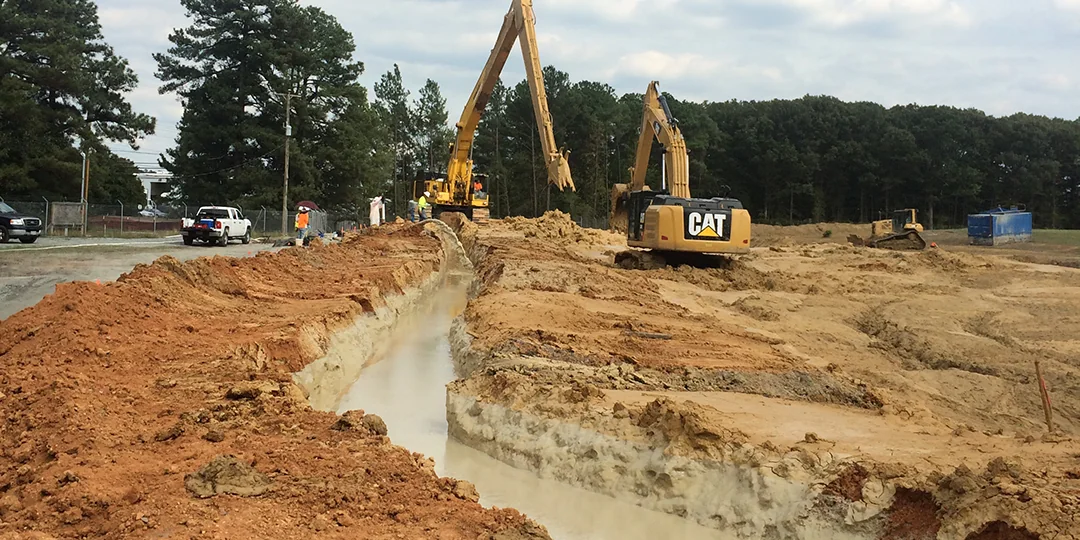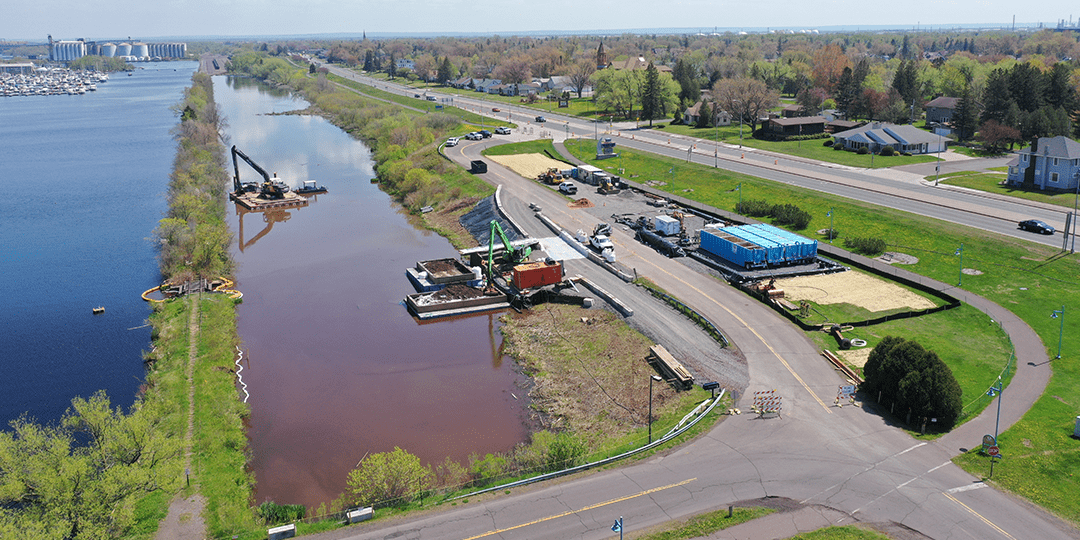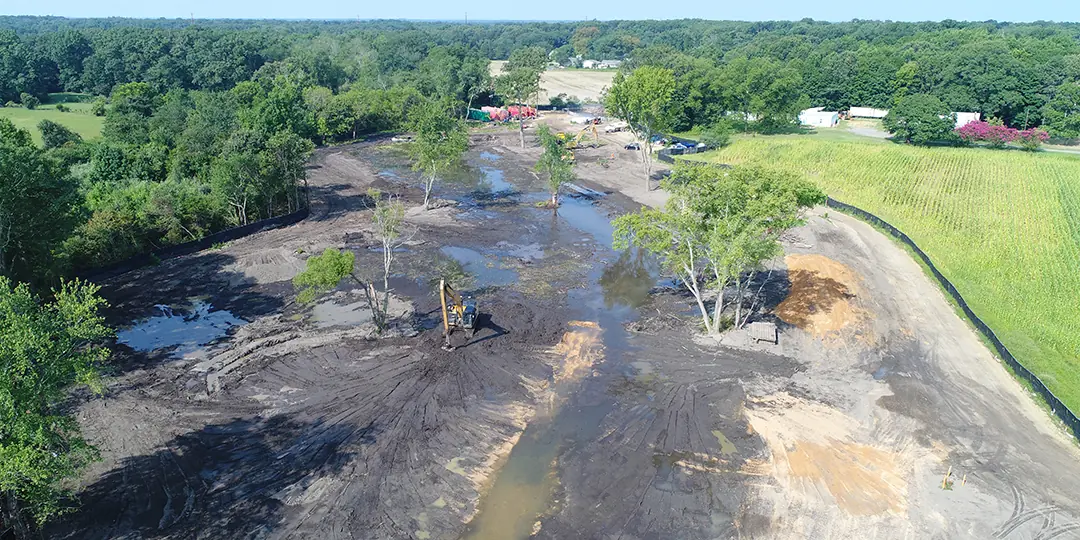FORMER MINE SITE PROCESS AREA RADIOLOGICAL REMEDIATION
Industry: Mining & Metals
Location: Rocky Mountains
Former Mine Site Restoration Completed Ahead of Schedule With an Emphasis on Worker Safety
ENTACT conducted three remedial actions at a former copper mine site in Nevada. The remediation required the removal of 6,000 tons of radiological soil, 21,000 feet of “transite” asbestos pipe, and the capping of 25 acres of tailings in two former evaporation ponds. All actions were completed in compliance with an EPA Administrative Order on Consent, ahead of schedule, and with no injuries to onsite personnel. The EPA “was particularly impressed by the strong emphasis placed on worker health and safety throughout the project.”
Evaporation Pond Closures
Before the two evaporation ponds could be closed, 121,500 bank cubic yards (bcy) of borrow pit material was used to construct 3 miles of haul roads per Mine Safety and Health Administration (MSHA) specifications. Four acres of geo-grid were installed as stabilization for test pads and a staging area. The remedial action consisted of a 12-inch compacted contour dust mitigation cover over a 22-acre pond with 34,000 bcy and an 8-acre pond with 30,000 bcy of cover material.
Process Area Radiological Area Removal
ENTACT constructed a transite pipe staging, a sediment decontamination pad, and a PVC-lined wet RAD removal decontamination pad. Seventeen RAD areas (hot spots) were excavated from the mine’s former precipitation plant. An additional 2-foot-thick area was excavated within the footprint from another process area. The stockpiled materials were blended and loaded into offsite disposal vehicles. Before leaving the site, each loaded truck was surveyed for radioactivity and DOT compliance.
Transite Pipe Abatement
This phase included the construction of an onsite landfill and the removal of 21,000 linear feet of transite pipe. Transite pipe is a regulated asbestos-contaminated material (RACM), and any sediment within the pipe was considered potentially impacted with radioactive waste. Dry decontamination was conducted on pipes that contained sediment or scale. The pipe was transported to the onsite landfill, and if sediment/scale remained, it was loaded into roll-off containers for offsite disposal. The clean and decontaminated pipe was buried in the onsite landfill and closed with a 30” cap.
Let’s work together
We want to hear about your project. Learn how we
deliver results with innovation.



